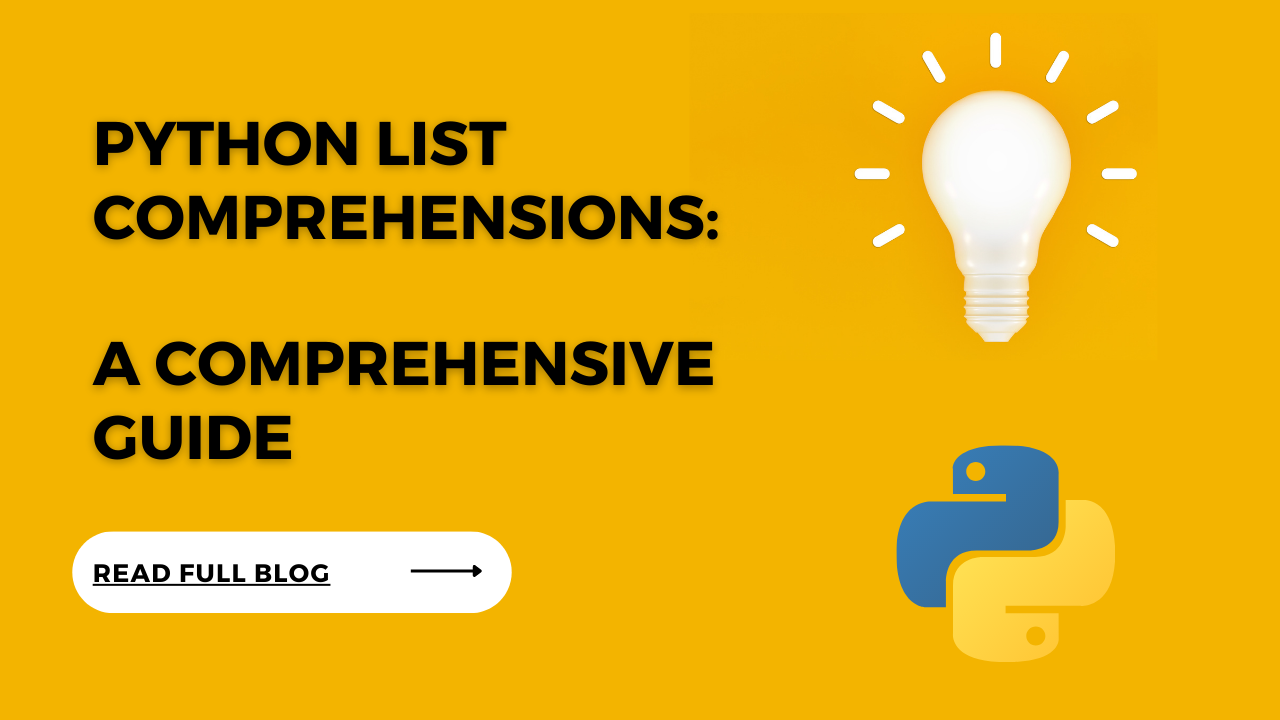
Introduction:
List comprehensions are a powerful feature in Python that allow you to create and manipulate lists in a concise and elegant way. By combining loops and conditional statements into a single line of code, list comprehensions can drastically simplify your programming tasks. In this blog post, we’ll explore the ins and outs of list comprehensions and demonstrate how they can enhance your Python code.
What are List Comprehensions?
List comprehensions provide a compact syntax for creating new lists based on existing lists or other iterable objects. They follow the format:
new_list = [expression for item in iterable if condition]
The expression represents the value you want to include in the new list, item refers to each element in the iterable object, and the condition is an optional filter to include only certain elements.
Basic Usage:
List comprehensions excel at transforming and manipulating data. Let’s dive into a few more examples to illustrate the power of list comprehensions:
Example 1: Squaring Numbers
numbers = [1, 2, 3, 4, 5]
squared_numbers = [num ** 2 for num in numbers]
print(squared_numbers)
In this code snippet, we start with a list of numbers. Using a list comprehension, we create a new list called squared_numbers where each element is the square of the corresponding number in the numbers list. Finally, we print the squared_numbers list, resulting in [1, 4, 9, 16, 25].
Example 2: Filtering Even Numbers
numbers = [1, 2, 3, 4, 5]
even_numbers = [num for num in numbers if num % 2 == 0]
print(even_numbers)
Here, we use a list comprehension to create a new list called even_numbers, which only includes the even numbers from the numbers list. The resulting output is [2, 4].
Example 3: Manipulating Strings
words = ["Hello", "World", "Python", "Programming"]
upper_case_words = [word.upper() for word in words]
print(upper_case_words)
In this example, we capitalize all the words in the words list using a list comprehension. The resulting output is ['HELLO', 'WORLD', 'PYTHON', 'PROGRAMMING'].
Nested List Comprehensions:
List comprehensions can handle nested structures, allowing you to create multidimensional lists effortlessly.
Example 4: Flattening a Matrix
matrix = [[1, 2, 3], [4, 5, 6], [7, 8, 9]]
flattened_matrix = [num for row in matrix for num in row]
print(flattened_matrix)
Here, we have a nested list called matrix. By utilizing a nested list comprehension, we create a flattened version of the matrix, where all the elements are merged into a single list. The output is [1, 2, 3, 4, 5, 6, 7, 8, 9].
Benefits of List Comprehensions:
Using list comprehensions offers several advantages:
- Readability: List comprehensions condense complex logic into a single line, making the code more readable and concise.
- Efficiency: List comprehensions are often more efficient than traditional for loops, resulting in faster execution times.
- Code Maintainability: With list comprehensions, you can express your intentions more clearly, making it easier to understand and maintain the code.
- Code Reduction: List comprehensions allow you to achieve the same functionality with fewer lines of code, reducing unnecessary verbosity.
Conclusion:
List comprehensions are a concise and efficient way to manipulate lists in Python. By leveraging their power, you can write cleaner and more expressive code. We’ve explored their basic usage, filtering with conditional statements, manipulating strings, and handling nested structures. With this newfound knowledge, you can harness the full potential of list comprehensions and take your Python programming to the next level.
Happy coding!
The Education Machine

Leave a Reply